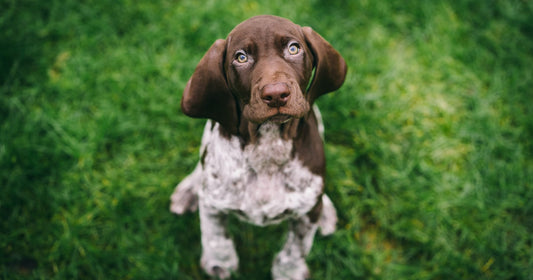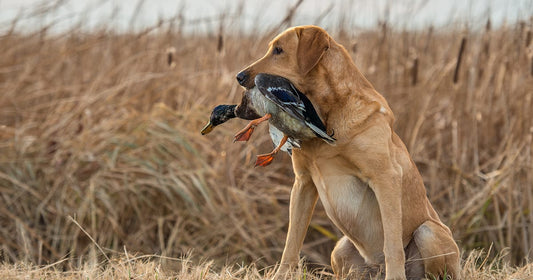As hunting season approaches, it’s important to ensure your canine companion is ready to perform at their best. If your dog has spent the winter and spring enjoying their off season, now is the time to implement a conditioning and nutrition plan. A hunting dog’s drive often exceeds their physical limits, so without proper preparation, this can lead to serious injury.
Choosing the Right Nutrition for Your Hunting Dog
The foundation of any conditioning program begins with the fuel that runs the engine—what you feed your canine athlete. While many dog foods on the market claim to support sporting and performance breeds, not all are created equal.
- Top-quality real meat protein meals with no meat by-products.
- Quality fat sources that contain no corn, wheat or soy, only wholesome grains.
- Concentrated energy provided by meat proteins and fats that deliver nutrient-dense calories to maintain weight and stamina.
- Antioxidant-rich nutrients that deliver a healthy immune system and shiny coat.
- Chelated minerals, including all vitamins and minerals required for optimal health in a readily available form.
- Omega-3 and Omega-6 fatty acids that are essential for normal immune activity, skin coat and nail health.
- Prebiotics for digestive health and immune support.
Native dog food uses the EnergyFIT System (FIT = Formula Intensity Technology), which formulates Native products into six different energy levels. Each canine athlete has specific dietary needs based on their breed, size and activity, so these different levels adjust the protein and fat ratios in each to ensure your hunting dog is receiving the best nutrition.
High protein levels are important in dog food as protein is the cornerstone of muscle repair and overall cellular health. It supports bones, muscles, cartilage, skin and blood. Unlike fat and carbohydrates, the body doesn’t store protein, so a consistent, high-quality supply of protein is essential—especially for active dogs.
In addition, fat is important as it is the primary energy source in dogs. It delivers more than twice the calories per gram compared to protein or carbohydrates, making it vital for endurance and performance.
Choosing the right Native performance dog food level will always depend on your specific dog’s needs, but our canine nutritionists often recommend Native Level 3 for hunting dogs when they are engaged in the intense hunting season. Native Level 3 is a chicken meal and rice formula with 30% protein and 20% fat. During the off-season, with periods of less vigorous activity, you may consider moving your hunting dog down to Native Level 2 (26% protein and 16% fat), which is also a chicken meal formula or Native Level 2.5 (28% protein and 18% fat), which is a lamb and salmon meal formula.
When planning to transition levels, keep in mind that it may take up to six to eight weeks for dietary changes to fully benefit your dog’s performance. If your hunting season starts October 1st, switch to the appropriate Native level by August 1st to ensure optimal conditioning.
Conditioning Tips for a Strong Hunting Dog
As nutrition helps fuel the body, your dog’s heart and lungs must be in top shape to handle the demands of the field. These systems work together as oxygenated blood from the lungs powers the heart and both need consistent training.
You can start conditioning your dog by going on daily walks and gradually increasing the distance over time. Keep in mind that every mile for you is three times the number of miles for your dog.
- Start by walking a mile a day (three miles for your dog).
- Then aim for three miles a day (nine miles for your dog).
- Increase to five miles a day (15 miles for your dog) to ensure prime shape for your season opener.
In addition, walk early in the morning or late in the evening during hot months to avoid heat stress. And keep in mind that your dog isn’t the only one who needs conditioning. A successful hunt is more enjoyable when you, the hunter, are also in shape. Learn more about hunting dogs in other Native resources.




